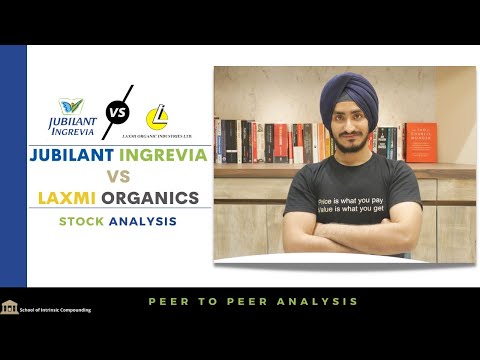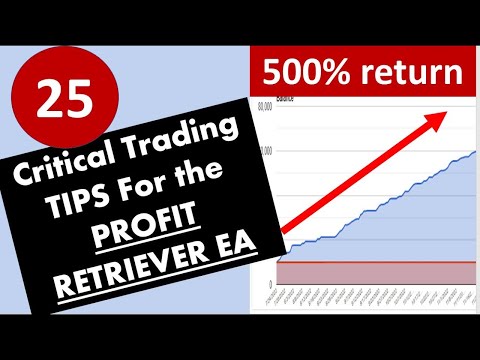Jubilant Ingrevia vs Laxmi Organics|Discount to fair value?|P2P Analysis

Hi investors! Welcome to SOIC. In today's business analysis, we'll compare Jubilant Ingrevia & Laxmi Organics. Both companies are very interesting. They've recently become listed. I think Ingrevia underwent a demerger. Laxmi Organics was recently listed.
We usually don't do an analysis on recently IPO companies, however, at times such companies are interesting, that an analysis is deserved . Before we begin the analysis, I would like to bring something important to your notice. Waren's Buffett's desk has a box labelled as "Too Hard/Difficult." What does this "Too Difficult" box mean? Warren Buffett analyses several businesses in a day.
Sometimes when he can't figure out what to do with some of the businesses, he places them in the "Too Difficult" box. The relevance of this in the world of investing is that, Warren Buffett though his years of knowledge and experience is a learning machine. He's taken advantage of compounding for years, in spite of this he has an inherent quality that I have observed as missing in many investors today.
This quality is, basically, Intellectual Humility. This means that he's aware of the extent of his knowledge and acknowledges this. When you aren't able to judge the future margins or direction of some companies, then they put within the "Too Difficult" box. You should also ask yourself when you're investing if you don't speculate or trade, do you have businesses in your portfolio, that should come under the "Too Difficult" box? The importance of the "Too Difficult" box is that If you've purchased a stock of a business that comes under the "Too Difficult" box, the problem with such businesses is that you won't know when to sell them. The 'when to sell?' aspect becomes missing from such businesses. This is the importance of the "Too Difficult" box.
Let's start the business analysis of Jubilant Ingrevia & Laxmi Organics. Jubilant Ingrevia was recently demerged from Jubilant Life Sciences. Jubilant Life Sciences had 2 businesses: Life Sciences Ingredients (LSI), and the other is Jubilant Pharma, they dealt with CDMO, radiopharmaceuticals, etc. Jubilant Life Science Ingredients is commonly known by people as Jubilant Ingrevia. Jubilant Ingrevia is a part of the Jubilant Bhartia Group.
The Jubilant Bhartia Group is a global conglomerate which has several businesses under it Jubilant Foodworks, Jubilant Pharma (which has been listed), etc. Laxmi Organics began manufacturing in 1989. Laxmi Organics & Jubilant Ingrevia have some common interests: both manufacture Acetyl Intermediate Looking at the Acetyl Intermediate's Value Chain, their building blocks are Methanol, Ethylene, Ethanol, etc. What are these Acetyl Intermediates? Acetic Acid, which is a major raw material, Ethyl Acetate, Acetaldehyde, etc.
An interesting thing to note is that Their major intermediate made of Acetyl is Ethyl Acetate. Now, what are these Intermediates? Any chemical or pharma companies' value chain includes 'key starting material,' 'intermediate' or solvents, 'active ingredient' (if we're talking about a pharma company), followed by 'formulation' in the end. Similarly a chemical business' value chain includes, 'feedstock,' from which some companies make 'bulk chemicals,' which is followed by 'intermediates,' & then 'speciality chemicals.' Acetyl Intermediate, in a value chain, is what comes between 'bulk chemicals,' & 'speciality chemicals.' These intermediates are used to make several other chemicals. This was the Intermediate Value Chain.
Let's look at how India's Chemical Industry has been gaining the market share over the years. The growth rate of India's Chemical Industry has been around 13% CAGR. China's Chemical Industry on the other hand, used to grow at 20%-25%, even today China's industry is growing at 7% CAGR. This means that India's Chemical Industry has been incremental gaining the market share, That's why we have been observing a lot of Tailwinds in the Chemical companies. Let's look into talk the Acetyl intermediate's Ethyl Acetate, and it's End Usage.
Ethyl Acetate is used in pharmaceuticals, flexible packaging, fragrances and aromatics, screen guards for phones, vitamins, paints and coatings. It was necessary to know the End Usage of Ethyl Acetate because Jubilant Ingrevia & Laxmi Organics are doing the same work in Ethyl Acetate . Both companies also come within the Diketene value chain. There are other common value chains which we'll discuss later. Let's look at Ingrevia's sales mix or revenue.
34% of their revenue is generated by the Speciality Chemical Business. 18% of their revenue/sales is generated by the Nutrition & Health Solutions. 48% of their revenue is generated by Life Science Chemicals. Life Science Chemicals include Ethyl Acetate, Ethanol, and other products. Laxmi Organics' business has 2 major parts: 1. Speciality Intermediates. This includes a major product called Diketene.
2. Acetyl Intermediate. The 2 major products include Acetaldehyde (which Ingrevia is also manufacturing) and Ethyl Acetate . Ethyl Acetate is interestingly used as a Solvent. As a solvent Ethyl Acetate is used to create reactions with other chemicals. Ethyl Acetate is currently gaining more market share than other solvents.
One of the reasons for this is that the toxicity of Ethyl Acetate is lower than other solvents. The other solvents used to create other chemicals or bind them, the older solvent utilised were toxic, meaning that they're poisonous, for humans. Ethyl Acetate isn't as poisonous for humans. Ethyl Acetate is greener in nature.
The sources it is made from don't release harmful residues in the environment. For these reasons, Ethyl Acetate is increasingly gaining the market share. Considering the capacity of India's chemical companies in manufacturing Ethyl Acetate. We see that Jubilant Ingrevia has the capacity of 1.50 KT per annum.
Laxmi Organics and Yellowstone (a subsidiary of Laxmi Organics) have the capacity of 1.67 KT per annum. Godavari Biorefineries Ltd. have the capacity of 105 KT per annum. IOL Chemicals has the capacity of 87 KT per annum. Jubilant Ingrevia & Laxmi Organics have a market share of 30%-33% in Ethyl Acetate production. Diketene is another product these 2 companies have in common. Before understanding what Diketene is. Let's understand Jubilant Ingrevia's Value Chain.
The reasons for Ingrevia & Laxmi Organics to produce Diketene. Looking at the Value Chain of Jubilant Life Science Chemical business, The process begins with Molasses, which creates Ethanol Ethanol and Acetate Acid combine to make Ethyl Acetate and Acetic Anhydride If any company does some Forward Integration then, it can enter the production of not only Acetic Anhydride but also Ketene Chemistry. Don't stress too much, it can be simply understood.
Basically this company has the potential for Forward Integration. The company can go beyond Ketene Chemistry & enter production of Diketene Derivatives. What are Diketenes? It is a colourless liquid which is produced through Ketene.
As we'd seen in why these companies produce them. Diketene is a building block for chemicals. The production of Diketene is hazardous. The companies producing this know this is a chemical that's difficult to produce and is hazardous. Thus, there are very few companies in the world, which produce Diketene. They cannot be transported or exported easily.
The players within a country prefer having local suppliers of Diketene. Laxmi Organics in 2009 acquired Clariant's chemical plant that manufactured Diketene. Ever since the they've entered the chemistry chain. By 2012-2014, Laxmi Organics had 12 such Diketene products. By 2020, they have approx. 34 such Diketene products.
Laxmi Organics has 55% market share. The other companies such as Lonza has about 34% of the market share, in the Indian context. As we've seen before, companies prefer having local suppliers of Diketene. The similarity here, when we talk about Alkyl Amines& Balaji Amines is that companies prefer having local suppliers of Aliphatic Amines. There is a similar preference within the Diketene business. Jubilant Ingrevia hadn't entered the Diketene business for many years, but it made sense for them to do so because they were already producing Ketene Chemistry.
All they had to do was Forward Integration of their business. Ingrevia has now decide to enter the production of Diketene Derivatives. They've decided to so because a Diketene player in China has recently shut down its capacity. We've seen that many chemical plants are being shut down & products in China are being let go of due to pollution.
The production of several such products is now being shifted to India. The China Plus One Policy can be seen slowly playing itself out. It will be observable in the API industry in the next 4-5 yrs. This can be seen in the Chemical Industry as well. If anyone wants to learn how to catch such trends, the basics of financial statement accounting, and forensic analysis.
We've done close to 120 case studies in our course. Every month we're uploading new videos on our Continuous Learning Course We're also conducting a webinar with our SOIC students regarding the recent result of 2 recently listed companies & the analysis of their annual result. Anyone is interested in our course, can check the link in the description.
Looking at the 2 companies' customers, Ingrevia has close to 1,400 customers. Their customer base is diversified, they're involvement with agrochemicals, cosmeceuticals, pharmaceuticals, etc. Laxmi Organics' customer base, on the other hand, have companies like Syngenta, Laurus Labs, UPL, etc. The similarities between Ingrevia & Laxmi Organics ends more or less here.
This is so because Jubilant Ingrevia is a diversified business. This business might be a bit difficult to understand however, we'll try to simply the business for you to understand it. We've talked about Ingrevia's products: Ethyl Acetate, Acetaldehyde, & recent initiative into Diketene. These products come under their Life Sciences Chemicals, where Jubilant Ingrevia's sales is around 48%. Laxmi Organics generates 80%-90% revenues from similar products from manufacturing Acetyl Intermediates & Speciality Intermediates. Let's discuss the other 2 businesses under Jubilant Ingrevia.
1. Speciality Chemicals. 2. Nutrition & Health Solutions. Let's discuss it's Speciality Chemicals business first. I'd explained in the Value Chain, that Ingrevia's strategy is that Jubilant's 3 Divisions: Nutrition, Chemicals, & Life Science are highly integrated with each other.
Jubilant in their Speciality Chemicals business produce Pyridine. The entry barrier here is: It takes about 3-5 yrs to get the regulatory approval to manufacture this chemical. It is useful for Jubilant Ingrevia to produce this chemical (Pyridine) because it benefits their Value Chain: as we'd seen that their basic raw material is Ethanol, then Acetaldehyde, followed by Pyridines & Picolines, and lastly the Pyridine Derivatives. Pyridine is used as an important raw material in the Chemical Industry.
It is also used in a herbicide called Paraquat. Herbicide is similar to a pesticide. Pyridine is also used as a solvent. Pyridines & Picolines are the key chemicals within the Speciality Chemicals business They have the largest production range in Picolines & Pyridines. They have close to 70 products. They are the top 2 in production of Pyridine & Beta Picoline.
Globally no. 1 in 11 Pyridine Derivatives. Their market share in Pyridines In some Pyridine Derivatives they have market shares of 85% , 22%, 60%, & 52%. This was one product in terms of the Speciality Chemicals business. They (Ingrevia) also provide CDMOs within the Specialty Chemicals business. CDMO services, simply understood are, those chemical & pharma companies who do their own R&D, and outsource their manufacturing are known as CDMO.
CDMO is Contract Development & Manufacturing Organisation. They provide CDMO services to 3 Value Chains: Agrochemicals, Pharmaceuticals, and Nutrition Division. In a pipeline, currently their CDMO services are extended to 4 Intermediates in Agrochemical, these are late-stage Intermediates, in case the R&D goes beyond the pipeline, then it will be successfully commercialised. If anyone wants to understand the CDMO services well. We'll be conducting a webinar on API business on 23rd May.
We'll discuss the CDMO Value Chain in our webinar. Coming back to the topic, Jubilant Pharma's 3 Intermediates are in the late-stage. Their supplies can be commercialised. Interesting things are possible within this business.
This was about their Speciality Business Chemicals. We'll be connecting the unconnected dots at the end. Their last division is the Health & Nutrition Mix. Let's look at the applications of their Nurtition Mix. Their major products are: Vitamin B3 & Vitamin B4.
Vitamin B3 is used in Feed Grade, which means, food for pets & animal feed. It's used in Animal feed to improve the growth of the animals, & to improve the egg's protein content. Vitamin B3 is also used in pharma grade, cosmetic grade & food grade. Jubilant is no.1 producer of Vitamin B3,
and the top 2 producers of Vitamin B4. In India, they are the largest manufacturers of Vitamin B4. For Vitamin B3, their global market share is around 19%. In India, their market share in Vitamin B4, is more than 50% (approx.). Their market for Vitamin B3 & B4 is currently increasing at 2%-4%. Let's understand their business strategy.
Why do they have so many products within their business? Let's understand their Integration strategy. We've discussed their Life Sciences business: Ethyl Acetate, Acetaldehyde, & Diketene. 25% of their Life Sciences Chemical business volume is consumed in-house by Speciality Chemicals. This means the 45% of Pyridine & Picoline is also consumed in-house.
Why is this consumption in-house? This is used to produce Vitamin B3 is produced. Each division is helping the other in terms of Backward Integration. This makes their CDMO business in Speciality Chemicals interesting. Their business strategy includes Vertical Integration, Backward Integration & Forward Integration. We've frequently observed this in the chemical businesses.
When we'd made the video on Deepak Nitrite, we saw how Chemical companies have to often establish the Feed Stock plants after which they enter the Derivatives of these Feed Stocks. Like Deepak Nitrite is entering the production of Phenols. Similarly, their (Jubilant's) 3 Divisions are being helped by this. Let's discuss the CapEx plans of both companies, Jubilant Ingrevia & Laxmi Organics. We can observe that Jubilant Ingrevia is going to CapEx at approx. INR 90 cr. in the next 2-3 yrs.
They already experienced a CapEx of between INR 300-600 cr in 2019, to establish a plant for Acetaldehyde. What's interesting about this CapEx is that it still hasn't experienced a Peak Asset Return. Which means, that CapEx is still under gestation, their Asset Turn is gradually increasing. Considering their CapEx of INR 900 cr, & where it's going to go, so, INR 550 cr CapEx is expected to occur in Jubilant's Speciality Chemicals Division. which comprises of their CDMO & Speciality Chemicals business. A CapEx of INR 100 cr is expected in their Nutrition & Health business.
Nutrition & Health Services business is their highest margin business. The remaining CapEx of INR 250 cr is expected in their Life Sciences business. These are the 3 types of CapExs that are going to happen. Within their Life Sciences business, they're entering the production of Diketene. In their Chemicals business, they're doing a Forward Integration in Agrochemicals.
Till now they were making Intermediates, but now they're going to make Active Substances in Agrochemicals As we can see in the Value Chain, they're moving from Intermediates to Active Substance. Laxmi Organics on the other hand is going to experience Capex in 2 areas. I think they've already experienced a CapEx, when they acquired a plant owned by a chemical company 'Miteni.'
'Miteni' deals with Fluorination chemicals. Like we'd talked about in 'Navin Chemicals.' This can be a good acquisition for them, because the margin of the Fluorine Chemical is high. The Valuation of these Chemical companies also becomes high. Navin Fluorine's Valuation for e.g., trades at 65x - 70x PE multiple.
SRF is also Navin's peer however, Navin seems to be in its own league in terms of the entry barrier in the business. Laxmi Organic's CapEx of INR 91 cr is going to happen in Speciality Intermediates. This is in regard to their CapEx of INR 90-91 cr in Diketene business. Do remember where the companies are going to CapEx.
When we'll discuss their Valuations, we'll get to know what's happening with these 2 companies. Comparing the 2 companies' Financials Ingrevia's revenue in 3 yrs (FY18-19) For FY18 revenue was INR 3,365 cr & in FY20 it became INR 3,179 cr The EBITDA shows a lot of Volatility, in FY17 the EBITDA was INR 434 cr. then became INR 632 cr, 445 cr, & 431 cr.
This Volatility is due to some of their products having typical Commodity Characteristics. Ethyl Acetate & Acetaldehyde their realisation is quite dependent on the Crude Oil. The rest of their products also have the Commodity Elements. Laxmi Organic's revenue shows that it's increased from INR 1,400 cr to 1,534 cr. Another important aspect to note from FY18-20 is it's a Low Margin company, 11%, 10%, 9% Their ROE is good, between 22%-18% Their Return on Capital Employed (ROCE) is also good, which is around 18% Jubilant Ingrevia's ROCE is around 14%, 12%, or 18% Hypothetically, there's a company that employed an asset of INR 100 on an asset of INR 100, the company is earning only INR 4, or earning INR 6 in some yr or 9 in another yr. This is called Return on Asset.
Its formula is Net Income/Total Assets Jubilant's Return on Assets is around 9%, A yr or 2 ago, this was between 4%-6%. Through Financial Ratios we observe that there are some Commodity Elements in the business. We can make a comparison based on Margin Profile.
This is to make absolutely clear which categories these Chemical business lie in. There are 3 Categories of these business: Low, Moderate, & High Margin. High Margin Category includes Navin Fluorine & Viniti Organics. Divis is also included because APIs are also Chemicals. In this way, Syngene is also included in the High Margin business category.
Moderate Margin includes Aarti Industries & Oriental Aromatics. Jubilant Ingrevia lies somewhere between Low & Moderate Margin businesses. Low Margin category includes Laxmi Organics & Bordal Chemicals.
Jubilant Ingrevia can go between Low Margin & Moderate Margin businesses. Looking at the Valuations of both companies, We're getting Laxmi Organics at almost 50x EV to EBTIDA multiple. Which I believe is extremely expensive. Please note that we're not registered with SEBI, this isn't an investment recommendation or advise.
I believe that it's extremely expensive at this time. The Price to Sales is also trading between 3x - 3.5x Ingrevia's Ev to EBITDA is currently between 10x - 12x Ingrevia's Price to Sales is between 1x - 1.5x In comparison to Laxmi Organics, Ingrevia has more discount in price. We're going to apply the Mental Model of the "Too Difficult" Box.
Even though according to our 5 Bucket Framework, Ingrevia is presently in the 5th Bucket 5th Bucket indicates a type of Gruesome business From the 5th Gruesome bucket it can move to the 3rd bucket, which means good ROCE plus good Earnings Growth. It can enter such a business. "Too Difficult" Box here means that we're unable to judge the direction of ROCE.
Why are we unable to judge this? We believe that some of their businesses are going to be Volatile in the Margins. It is too diversified a player. It is difficult to judge the amount of focus on particular businesses. This is our opinion. Ingrevia is included in our "Too Difficult" Box So we're not involved in assessing or investing the business. This was our conclusion.
Please tell us in our comments section, how you found this video's conclusion segment.
2021-05-04 18:14


